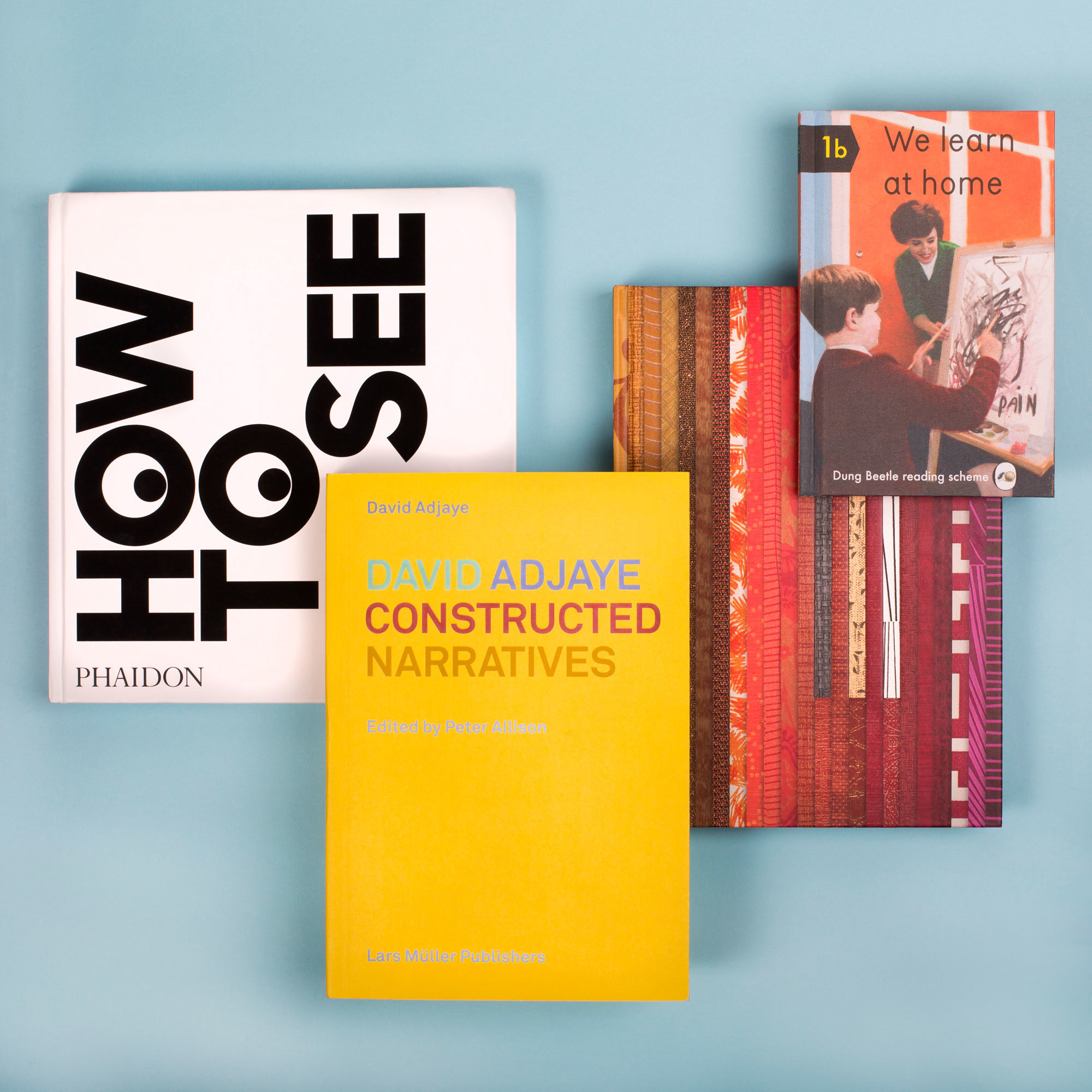Ever since our eviction from the Garden of Eden, the midcentury designer George Nelson wrote, we’ve been sculpting our own world. Over the interim millennia, we’ve developed a loud and incoherent visual landscape—one that requires a trained eye to comprehend. That’s where Nelson’s How to See (Phaidon) comes in. On the 40th anniversary of its initial release, his guide to parsing the visual world and cutting through “aesthetic pollution” is as relevant today as ever, with a new foreword by design critic Karen Stein and introduction by Pentagram partner Michael Bierut.
A quasi-educational read of an entirely different sort, artist Miriam Elia’s We Learn at Home (Dung Beetle) turns the midcentury early education book on its head. It skewers today’s ideological paradigms by way of a misguided homeschooling session, vacillating between scathing commentary and surreal absurdity. Though just 40 pages of cheery illustrations and prekindergarten syntax, the slim volume feels like a long but gratifying stare into the abyss.
Rather than criticize the stories we tell ourselves, Constructed Narratives (Lars Müller) aims to create one anew. The 350-page tome compiles the work of Ghanaian-British (and recently knighted) architect Sir David Adjaye into one coherent tale. In Adjaye’s own words, the book “assembles them as a single body, a sphere,” serving as a rhetorical membrane for nearly two decades of designs.
The unassuming title of Wolf-Gordon: Sample Book (Andrea Monfried Editions) belies the literal and figurative texture of the pages within. With textiles captured in extreme trompe l’eoil high fidelity and essays from Wolf-Gordon’s founders and heirs, the book documents the rise of the American wall covering, upholstery, and drapery company. Swatches of wool, wood, stone, and carpet capture the essence of decades past.
